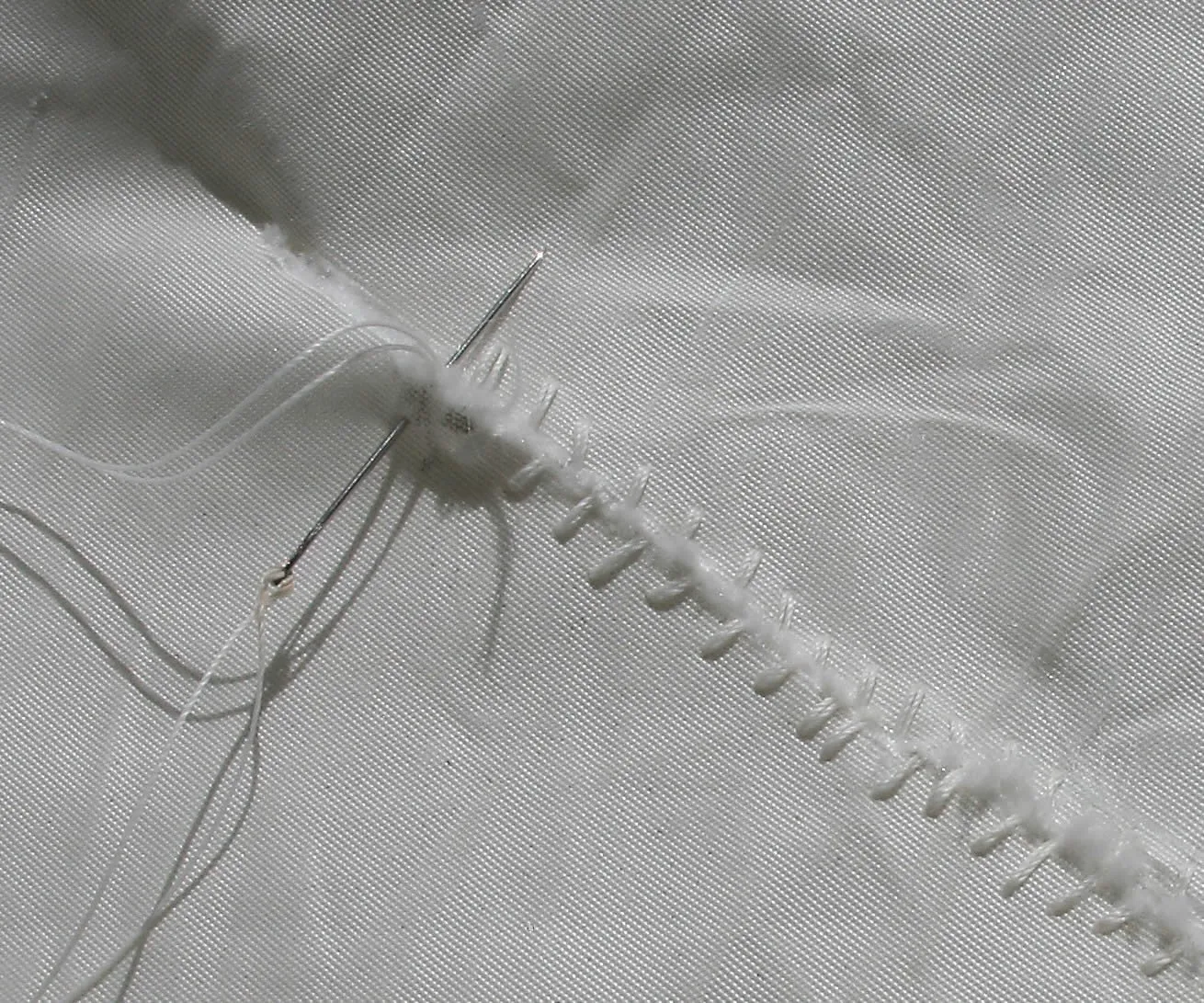If you’re going to sail you’ll be doing some stitching. No two ways about it. Don’t jump into the $100 do-everything kit. Start with a modest kit, adding tools and materials only as your skills grow and projects require them. You already have most of what you need in your other supply lockers or tool boxes. Study a good book on sail and canvas repair, concoct a few small projects for practice.

Work Surface – A wooden cutting board is perfect for small projects, much better than plastic.
Sailmakers palm – Get one that fits. Left-handed palms are available. A Dremel can smooth out the sharp edges, so your palm is as soft as a true sailmakers palm.
Needles – Get an assortment, size 12-18. Smaller numbers are larger needles. A number 16 is a good match for #4 whipping twine, your workhorse thread.
Waxed whipping twine – You can wax as you go, but pre-waxed is handier. Robline #4 is our favorite. It is heavier than machine thread, so it will last longer. And its strong enough that if you double it, you don’t need to back-fill in each zig-zag stitch. Heavier twines are used for webbing and around eyes, but for field repairs you can just use more strands of #4. Get a few spools; white is good for sails, dark colors are handy for marking lines.
Safety Pins and Straight Pins – You’ll want these for holding fabric. Double-stick seam tape helps, but if youre working in the wind or in tight spaces, pins seem to work better.
Awl or icepick – Essential forcing holes through material to stiff for palm or even stitching awl alone.
Stitching awl – These tools are handy when you can’t reach to both sides, but most jobs are more easily fixed with a needle and palm.
Pliers – Sometimes the needle requires a little encouragement. The one in your toolbox is fine.
Lighter or Soldering Iron for Sealing Edges – If you can’t turn a seam under soldering the edges prevents fraying.
Cutting Tools – Although a knife, razor, and seam ripper all have their place, start with scissors.
Materials – Some scraps of sailcloth and canvas are useful, but webbing, soft leather or elk hide, Sunbrella, and sail repair tape are just as essential.
Fids – Handy for loosening knots and splicing, get a standard fid before you start coveting all of the fine implements for splicing double braid. (A Fistful of Fids, PS July 2006).
Wool Yarn – Tell tales are perhaps the most common item, and though other materials fly more easily, wool seems to dry fastest and not get stuck to the sail. Some attach them with sail tape. You can also thread them through the tiniest possible hole with a knot on each side. Instead of struggling to thread fat yarn through a small needle (hint, push the needle onto the thread), thread a double strand of light thread through the needle, lasso the thick thread and bring it back through.
Household needles and thread – Include an assortment of smaller needles and thread for repairs to upholstery and clothing. White and several colors in heavier weights.
Fasteners – Once you head offshore its good to have a few grommets and a grommet kit, as well as some spare fasteners. ,
Now practice – If you can find nothing that needs fixing, splice and stitch a loop at each end of a short piece of old double braid-about a foot will do-youll find plenty of uses for it.



































Fantastic
Come on guys, anyone who has used a stitching awl knows that you must have access to both sides. Your quote: “Stitching awl – These tools are handy when you can’t reach to both sides, but most jobs are more easily fixed with a needle and palm.”
shows your lack of experience.